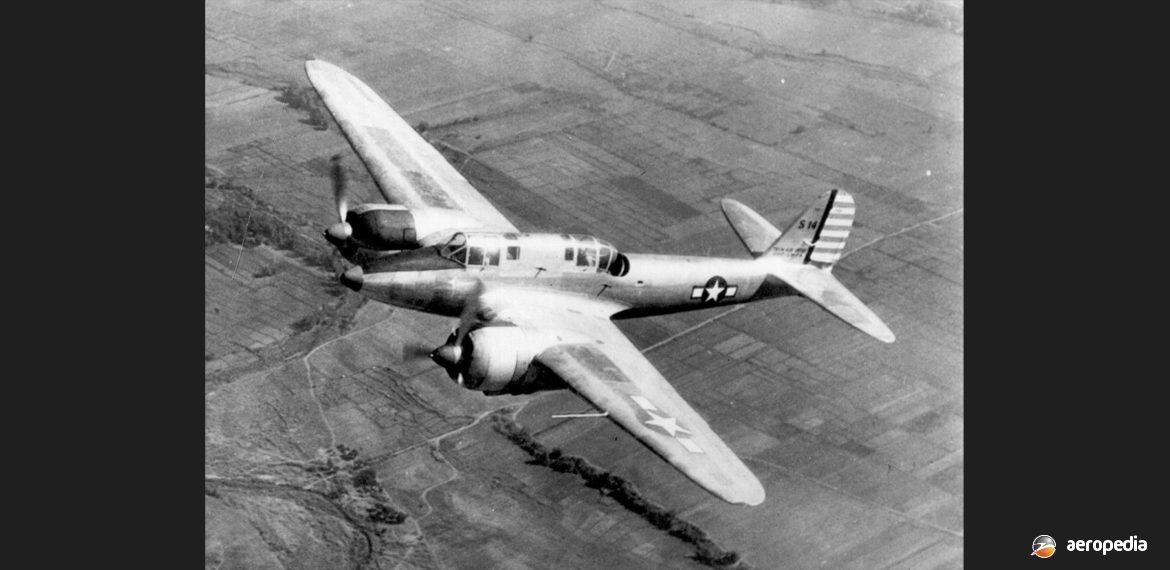Photograph:
Kawasaki Ki.45 Toryu Nick S-14 in American markings over Brisbane, QLD in about 1945 (RAAF Museum)
Country of origin:
Japan
Description:
Twin-engine heavy fighter, ground attack aircraft, and night fighter
Power Plant:
Two 783 kw (1,050 hp) Mitsubishi Ha-102 fourteen-cylinder two-row air-cooled radial engines
Specifications:
- Wingspan: 15.02 m (49 ft 3⅓ in)
- Length: 11 m (36 ft 1⅛ in)
- Height: 3.7 m (12 ft 1⅔ in)
- Wing area: 32 m² (344.444 sq ft)
- Max speed at 6,000 m (19,685 ft): 540 km/h (335 mph)
- Climb to 5,000 m (16,405 ft): 7 mins
- Service ceiling: 10,000 m (32,810 ft)
- Range: 2,000 km (1,243 miles)
- Empty weight: 4,000 kg (8,818 lb)
- Loaded weight: 5,500 kg (12,125 lb)
History:
The Kawasaki Ki.45 Toryu (Dragon Killer) – known to the Allies as Nick – was an important part of the Japanese Army’s fighter fleet in the Pacific and saw service through the war in a number of roles. In December 1937 Kawasaki initiated design of the Ki.45, a two-seat fighter fitted with two Nakajima Ha-20b engines, a licence-built variant of the Bristol Mercury.
The design team, led by Takeo Doi, began work in December 1938 and the prototype (c/n 4501) was ready in 12 months. Flight trials were not impressive and a number of changes were made to the second and third prototypes. Eventually, in April 1940, 746 kw (1,000 hp) Nakajima Ha-25 engines were installed. Later again some re-design took place to simplify manufacture and the first Ki.45 KAI prototype was completed in May 1941, the type becoming known as the Army Type 2 Two-Seat Fighter Model A Toryu.
The first unit to receive the type was the 5th Sentai at Kashiwa, and other units when formed were sent to Burma and China. The type was popular with crews due to the fact that it had heavy armament and fuel tank protection, and it gained a good reputation in the anti-shipping role. The type was frequently seen in the Papua New Guinea theatre of operations when it regularly patrolled for, and attacked, United States Navy PT patrol boats. It was adapted for the night-fighter role and was used against B-24 Liberators, this model becoming the Ki.45 KAIc. For this it was fitted with two obliquely-mounted upward-firing 20 mm HO-5 cannon, similar to the German developed Schrage Musik installation. A number were also fitted with radar.
When United States Air Force (USAF) Boeing B-29 Superfortresses commenced bombing the Japanese homeland, the Ki.45 operated in the defensive role. One pilot, Captain Isamu Kashiide, was credited with the destruction of 26 B-29s. A few aircraft were experimentally fitted with a 75 mm Type 88 anti-tank cannon but the gun proved too much for the structure of the fighter.
A total of 1,701 Ki.45s was built by Kawasaki at its Gifu and Akashi plants. Towards the end of the war production gave way to the Ki.45-II, a development with 1,119 kw (1,500 hp) Mitsubishi Ha.112-II engines, which became known as the Ki.96.
The Ki.45 series was used extensively throughout the war in the south Pacific region. The 13th Sentai operated in Papua New Guinea and the Dutch East Indies with the type; and the 45th Sentai operated in The Philippines, Papua New Guinea and Rabaul in New Britain. A number of examples were shot down over Papua New Guinea and in the islands. Others, which could not be repaired in time to be evacuated when the Japanese forces left, were abandoned around the old strips, particularly around Madang, Wau and Salamaua, and have since deteriorated.
After the war at least one Ki.45 was taken to the United States for testing by the Technical Intelligence Unit but it is not known to have survived. One other was recovered to Australia and made airworthy for testing by the Allied Intelligence Unit based at Eagle Farm, QLD.

